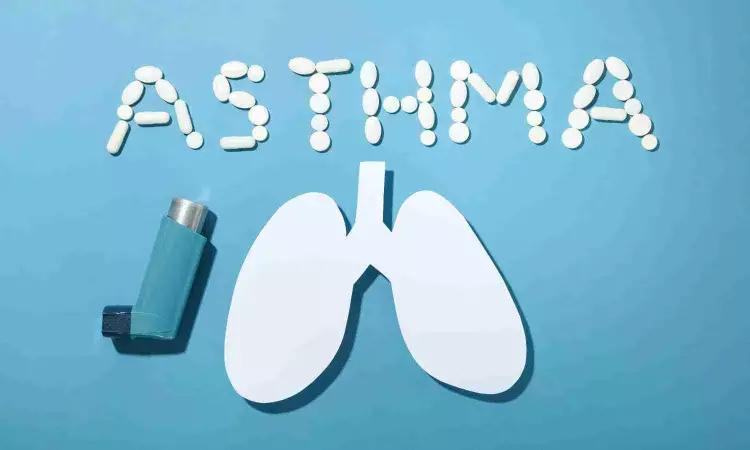- Home
- Medical news & Guidelines
- Anesthesiology
- Cardiology and CTVS
- Critical Care
- Dentistry
- Dermatology
- Diabetes and Endocrinology
- ENT
- Gastroenterology
- Medicine
- Nephrology
- Neurology
- Obstretics-Gynaecology
- Oncology
- Ophthalmology
- Orthopaedics
- Pediatrics-Neonatology
- Psychiatry
- Pulmonology
- Radiology
- Surgery
- Urology
- Laboratory Medicine
- Diet
- Nursing
- Paramedical
- Physiotherapy
- Health news
- Fact Check
- Bone Health Fact Check
- Brain Health Fact Check
- Cancer Related Fact Check
- Child Care Fact Check
- Dental and oral health fact check
- Diabetes and metabolic health fact check
- Diet and Nutrition Fact Check
- Eye and ENT Care Fact Check
- Fitness fact check
- Gut health fact check
- Heart health fact check
- Kidney health fact check
- Medical education fact check
- Men's health fact check
- Respiratory fact check
- Skin and hair care fact check
- Vaccine and Immunization fact check
- Women's health fact check
- AYUSH
- State News
- Andaman and Nicobar Islands
- Andhra Pradesh
- Arunachal Pradesh
- Assam
- Bihar
- Chandigarh
- Chattisgarh
- Dadra and Nagar Haveli
- Daman and Diu
- Delhi
- Goa
- Gujarat
- Haryana
- Himachal Pradesh
- Jammu & Kashmir
- Jharkhand
- Karnataka
- Kerala
- Ladakh
- Lakshadweep
- Madhya Pradesh
- Maharashtra
- Manipur
- Meghalaya
- Mizoram
- Nagaland
- Odisha
- Puducherry
- Punjab
- Rajasthan
- Sikkim
- Tamil Nadu
- Telangana
- Tripura
- Uttar Pradesh
- Uttrakhand
- West Bengal
- Medical Education
- Industry
FeNO helps in diagnosis of chest tightness-variant asthma in children, claims study

A recent research identified a potential breakthrough in diagnosing a novel form of asthma in children known as Chest Tightness-Variant Asthma (CTVA). CTVA is characterized by chest tightness as the primary symptom and presents a diagnostic challenge due to its atypical nature. However, a recent study published in the recent edition of Respiratory Medicine journal illuminates the promise of this diagnostic approach.
The study was conducted on a total of 95 children aged 6 to 14 years with chest tightness as their only symptom for more than four weeks. Tengteng Zhang and team evaluated the efficacy of combining bronchial provocation testing with fractional exhaled nitric oxide (FeNO) measurement for the diagnosis of CTVA.
The results revealed that while lung function remained normal in both CTVA and non-CTVA groups, the FeNO levels significantly differed. The children in the CTVA group expressed FeNO levels averaging 22.35 parts per billion (ppb) that was markedly higher than the average of 14.85 ppb in the control group. This discrepancy in FeNO levels proved statistically significant (P < 0.05).
Utilizing the receiver operating characteristic (ROC) curves, further analysis demonstrated that FeNO could help in diagnosing CTVA, with an optimal cutoff point of 18.5 ppb. At this threshold, FeNO expressed a sensitivity of 60.3% and specificity of 77.8%. Additionally, a negative correlation was observed between FeNO levels and bronchial hyperresponsiveness parameters such as Dmin and PD15 (P = 0.006).
Despite these promising findings, it is essential to note that FeNO alone does not serve as a definitive diagnostic marker for CTVA. Instead, it should be utilized alongside bronchial provocation testing to enhance the diagnostic accuracy. The integration of FeNO measurement into the diagnostic process provides the clinicians with a supplementary tool to help in the identification of CTVA that offers a non-invasive and relatively simple approach for pediatric patients.
This development in CTVA care holds significance for the clinicians with the challenges of diagnosing atypical asthma presentations in children who present solely with the chest tightness symptoms. Overall, the healthcare professionals can expedite appropriate treatment strategies by refining diagnostic methods which in turn improves the outcomes and quality of life of patient. Further research and clinical validation is mandated for this innovative approach that could potentially transform the management of CTVA by benefiting children globally.
Reference:
Zhang, T., Xu, L., Zhang, Y., & Zhen, L. (2024). The diagnostic value of bronchial provocation testing combined with fractional exhaled nitric oxide (FeNO) in children with chest tightness-variant asthma (CTVA). In Respiratory Medicine (Vol. 223, p. 107543). Elsevier BV. https://doi.org/10.1016/j.rmed.2024.107543
Neuroscience Masters graduate
Jacinthlyn Sylvia, a Neuroscience Master's graduate from Chennai has worked extensively in deciphering the neurobiology of cognition and motor control in aging. She also has spread-out exposure to Neurosurgery from her Bachelor’s. She is currently involved in active Neuro-Oncology research. She is an upcoming neuroscientist with a fiery passion for writing. Her news cover at Medical Dialogues feature recent discoveries and updates from the healthcare and biomedical research fields. She can be reached at editorial@medicaldialogues.in


